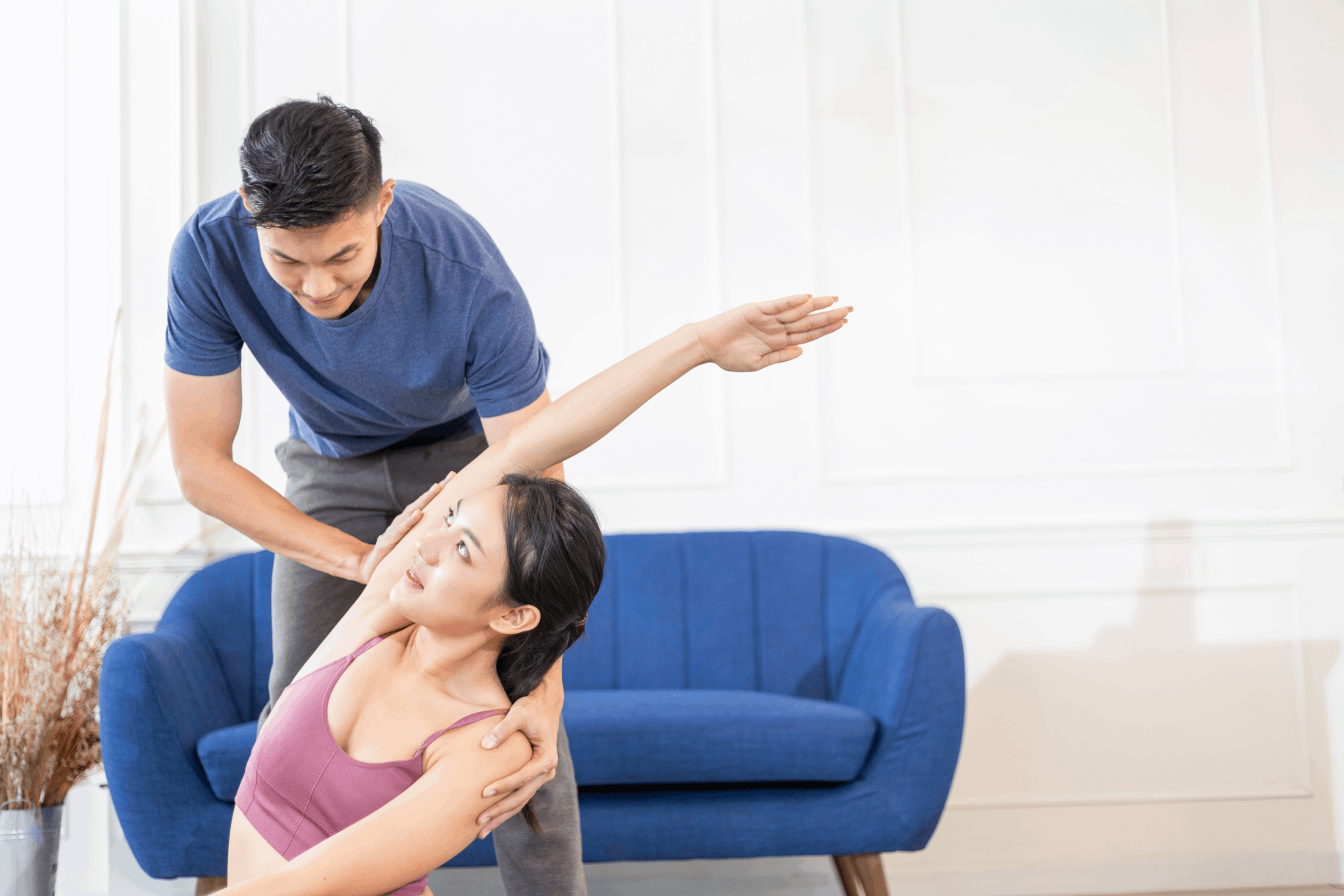Core Stability….what exactly is it?
“Core Stability” is a buzzword regularly used by therapists and personal trainers, but what exactly does it mean? And what’s it all about?
Core Stability relates to the deep muscles of the abdomen, pelvis, and lower back and the ability of these muscles to stabilise the torso of the body during movement. Core Stability training is specific exercise that targets these muscles to help create and maintain good postural alignment, develop control of your spine, and provide a stable base for the movement of your arms and legs.
Why is this important? And how does this apply to you?
By having a strong “core” allows the deep muscles to act like a corset that supports your lower spine, this especially important during activities such as bending or lifting while digging in the garden, picking up your children, perfecting that golf swing or kicking a football.
So…How can I improve my Core Stability?
Pilates is one of the most popular and safest forms of exercise that can be used to help develop “core stability”. Many of the Pilates exercises are simple yet challenging. It is suitable for all ages and levels of ability, and overtime as you get stronger the exercises can be progressed in difficulty level.
The Basics…
Finding good postural alignment
Good posture is dependent on being able to find your neutral spine. The Neutral spine refers to good, balanced alignment of the spine & pelvis. It is key to being able to fi nd your neutral spine while using your core muscles when performing everyday tasks such as walking, sitting and lifting.
nd your neutral spine while using your core muscles when performing everyday tasks such as walking, sitting and lifting.
Step-by-step guide to achieving the Neutral spine while standing
- Stand with your weight on both feet slightly more than hip width apart and bend your knees very slightly.
- Put your hands on top of your pelvis, just below your waist.
- Roll your pelvis forwards and towards the floor like your pouring water out of a bucket. Notice that your bottom pokes backwards and the back slightly arches.
- Roll your pelvis backwards tucking your tailbone under. You should feel the low back flatten. Try and be aware of the range of movement that you have moved through in each direction.
- Now find the position where your pelvis is half way between these two extremes.
Well done! You have now achieved the neutral spine position.
Without losing the neutral spine, gently lower your hands to your side, softly bring your shoulders down and back, and think about lengthening through your spine – imagine there is a string attached to the top of your head and someone is pulling you straight up and making you taller. This should be a comfortable standing posture.
Be aware that poor posture takes many years to develop, and “good posture” is about being mindful and will take practice and effort to achieve. But once you are happy you can.
Step-by-step guide to engaging your Core Stability muscles.
- Standing in your neutral spinal position place your fingertips on the bony parts at the front of your hips. Move your fingertips gently a few centimeters towards your belly button and a few centimeters towards your toes. You should now be directly over one of your deep abdominal muscles.
- Imagine that your deep abdominal muscles are forming a corset around your lower spine.
- Now slowly and gently, take a deep breath in, drawing the breath down into your stomach. As you breathe out – gently draw your belly button back towards the spine and lift up through your pelvic floor muscles, as if stopping yourself from passing water. As a result your “muscular corset” will be drawn in and you should feel the muscles subtly draw away under your fingertips. MAKE SURE YOU HAVEN’T LOST YOUR NEUTRAL SPINE WHILST DOING THIS. REMEMBER EVERTHING ELSE MOVES BUT YOUR NEUTRAL SPINE REMAINS STABLE.
- Holding your muscular corset as you continue to breath normally.
- You have now engaged your core!
To practice try and hold your neutral spine while engaging your core muscles in different positions, such as while sitting, lying down on your back with your knees bent, or even on all fours. Before starting any lifting or bending (including children or out in the garden) or any physical activity which places stress on your lower back, pause for a few seconds to engage your core and protect your back.
For more information and advice contact your Osteopath at Cheadle Osteopathy on 0161 478 1877.
EXERCISE WARNING & DISCLAIMER
All exercise can be dangerous, especially if performed without medical advice, proper supervision and/or per-exercise assessment. These instructions/exercise suggestions are simplified Pilates exercises and are not intended to be professional training advice. If you have any chronic or recurring condition/injury, and or if you are pregnant, nursing, or elderly always consult your healthcare professional/Osteopath before performing any exercise. All exercises you perform you perform at your own responsibility and at your own risk. If you experience any pain or discomfort while doing any of the above exercise please stop and contact your Osteopath.
Images taken from The Book of Pilates by Joyce Gavin published by Parragon Publishing (2005).





